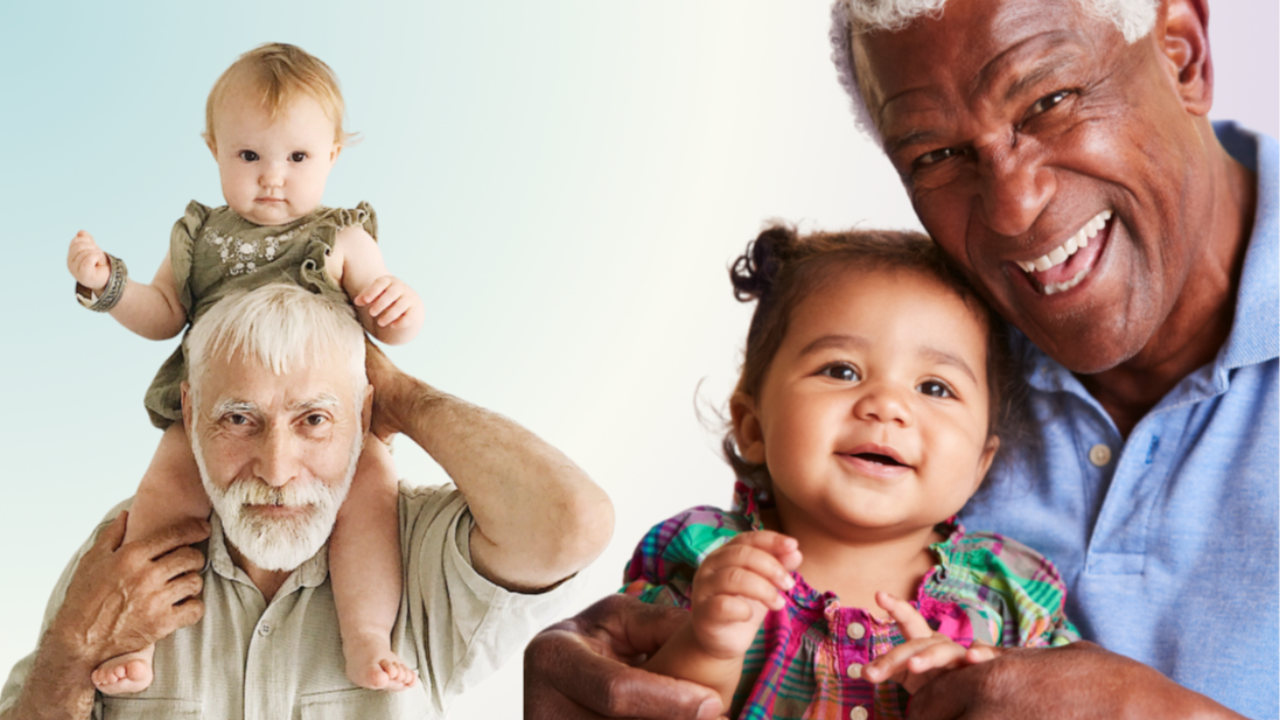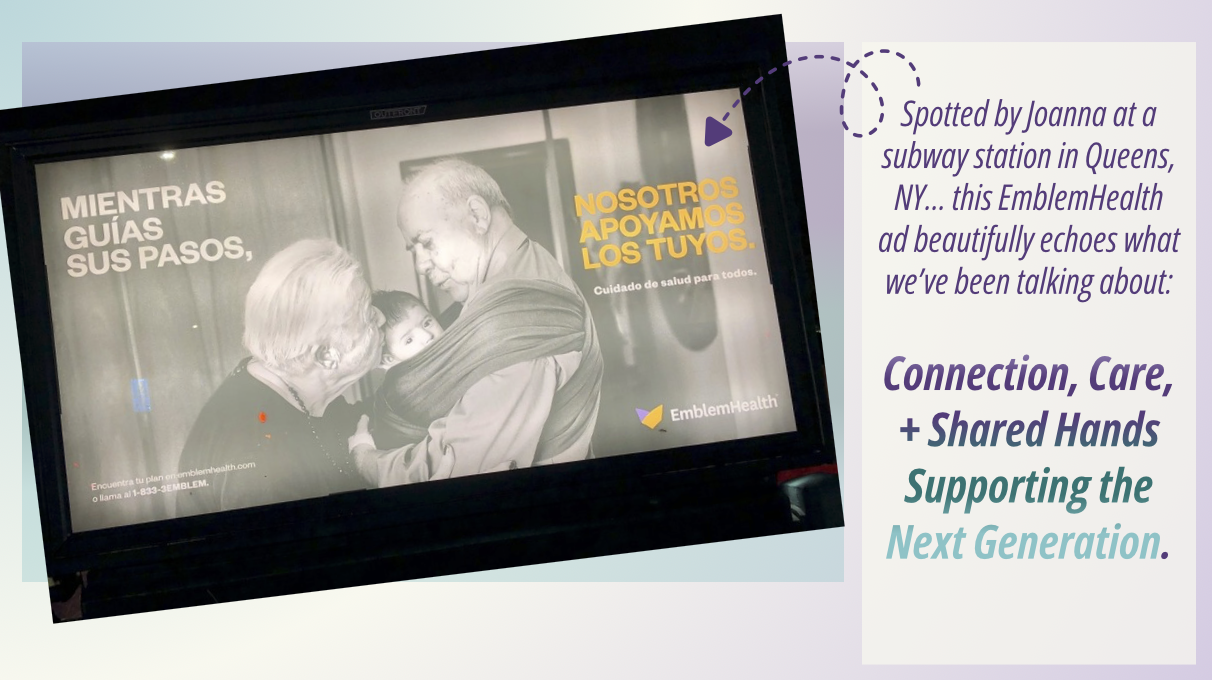Teaching the Village: Expanding Babywearing Education Beyond Parents (Part 1)
Nov 04, 2025
Post One in a Three-Part Series
Parents are often the ones doing the late-night soothing and midday naps in a baby carrier, but babies aren’t built for a single set of arms. Human infants evolved within communities where comfort, soothing, and social learning came from multiple caregivers.
Shared caregiving isn’t a modern need; it’s a biological expectation.
Grandparents, aunts, uncles, nannies, friends… these helpers step into the baby’s world, offering continuity and a sense of belonging. When we include them in babywearing education and support, we are not simply teaching a technique or how to use a baby carrier. We are reinforcing the baby’s ‘network of attachment’ and strengthening the scaffolding that supports a new family.
- When we teach babywearing to these helpers, not just to parents, we expand a baby’s circle of connection. And we help the grown-ups feel connected too.
Why motivations matter
Before we talk technique, fabrics, or where waistbands go, it’s essential to listen.
Every alternate caregiver arrives with a story:
• A grandparent longing for closeness and belonging in this new family chapter
• A nanny juggling snack time, pickup lines, and a baby who wants to be held always
• A friend looking to provide support for recovery and rest
• A sibling caregiver who wants to be capable in the chaos
Their reasons, their whys, are different, which means needs and confidence will look different for each of them.
Listening to their motivations helps us anticipate what carriers or techniques will feel supportive and what could feel intimidating. If we listen long enough, though, we might even hear what fears might be quietly standing in the way.
Sometimes concerns are physical, such as fear of dizziness or back pain. Other times, they are emotional; fear of “doing it wrong” or of being rejected by the baby. Still others are shaped by generational norms. Many caregivers from older generations were told that frequent holding creates “bad habits,” not secure attachment. Their hesitation often comes from love, caution, and a desire to protect the new parents.
Taking time to ask about what they want this experience to feel like invites curiosity and then builds trust right from the start.

Bridging beliefs with respect
When someone says, “We didn’t do that in my day,” or “We didn’t have those when I was a parent,” they may be expressing grief that their own wisdom feels outdated. Knowledge about infant physiology and attachment has changed rapidly in the last few decades. We now understand that close physical contact helps regulate an infant’s heart rate and breathing, supports digestion, reinforces secure attachment, creates new neural pathways, and reduces stress for both the baby and the adult. These insights weren’t commonplace knowledge when many grandparents were raising children.
Education becomes most effective when we acknowledge that they did a beautiful job raising their babies in the world that existed then, and now we’re expanding that care with updated tools and understanding.
To make real progress, we need to pause and listen first.
A caregiver’s hesitation often comes from love, not resistance. Maybe they’re worried about safety, about the baby’s independence, or about the parents’ energy. Maybe they’re grieving that the parenting world feels unfamiliar, or that their experience doesn’t automatically translate into authority anymore.
Our role isn’t to dismantle their worldview or to show them the “right” way to do things.
Try asking open-ended questions:
“What was it like when you were raising your children?”
“What are your biggest concerns about babywearing?”
“What feels different about parenting now?”
Listening in this way reveals what’s underneath the hesitation, the deeper need behind the concern. Once you understand that, you can speak directly to it.
That kind of response validates their values while expanding their understanding. It helps caregivers feel heard and respected…and when people feel respected, they’re open to learning.
Empathetic communication also models something powerful for parents. They see how to bridge differences with their own family members with curiosity and care rather than defensiveness.
Respect in this moment is kind, but it’s also strategic.
Teaching as relational work
Babywearing is a tactile, rhythmic, and personal practice. It’s not simply putting a baby in a baby carrier (because babies go on bodies). It’s personal because they’re sharing a heartbeat, breathing rhythm, warmth, and gaze; all primary regulators of an infant’s nervous system. When an alternate caregiver learns to carry, the baby learns that comfort exists in many places, not just in one pair of arms. That redundancy is a resilience-building tool.
Parents benefit too. Allowing someone else to carry can be emotionally complex, particularly in the early weeks. It’s ok for them to wait a few weeks before sharing the carrying. They may crave rest yet fear missing out on bonding. They may feel pride in their village yet worry that others won’t know the baby’s cues.
A shared class or group consultation allows everyone to learn the same safety and positioning checks and soothing strategies. It builds a common language so that confidence is mutual, not assumed, and helps create a team mentality.
Your role in this evolving circle
As educators, we are often the first to invite alternate caregivers into this world of responsive care. With your guidance, an uncertain grandparent becomes a confident participant in the baby’s calm circle. A nanny becomes attuned to subtle cues that avoid stress before it begins. A parent learns what it feels like to be supported without being replaced.
You are introducing a practice that holds more than a baby. It holds relationships steady while roles shift and deepen. It creates a shared understanding that caring for a human being begins with closeness.
Teaching babywearing to the village isn’t extra work. It is the ancient pattern restored in modern life.
----------
Up Next (Post Two):
Supporting Aging Bodies and Rapidly Growing Babies: A practical and compassionate look at helping part-time caregivers feel strong, safe, and successful while babywearing. Click here
This post is part of a three-part series
Exploring how babywearing supports connection across generations and helps every caregiver feel confident and included.
Part 2: Carrying Across Generations
Supporting the bodies and confidence of grandparents, nannies, and other alternate caregivers through adaptive babywearing education.
Read more →Part 3: When More Hands Help
Practical ways to invite grandparents, helpers, and loved ones into babywearing while keeping safety and comfort front and center.
Read more →Looking for something you can share with families? Download the free “Sharing Babywearing With Loved Ones” handout here.


